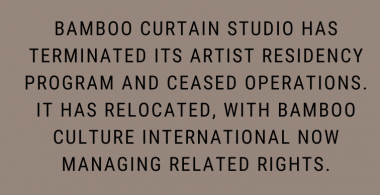Derrick Meng-Chin Huang

Visual Arts, Installation | Taiwan
Derrick, Meng-Chin Huang was born in Chai-Yi, Taiwan and completed his MFA from the Taipei National University of the Arts in 2007. In recent years, he held several solo exhibitions and participated in many joint exhibitions national and international. During his study, he received an outstanding award from the 1st TNUA Art Work Prize and Graduate scholarship by the TNUA Fine Arts Department. In 2005, Huang received sponsorship to undertake an artist residency in India. After the residency he presented a lecture at TNUA regards his experiences and research in India. In 2008, Huang received the third artist residency fellowship in BAN CHIAO 435 international artist village in Taiwan. In 2010, he was invited to the Sydney College of Arts for artist research program, the TAIWAN Fellowship for artist residency in the Headlands Art Center from Asia Culture Council, and the Exchange Fellowship to visit Kala Art Institute from the Fulbright Foundation of Scholarly Exchange. In 2012, he received sponsorship from Ministry of Culture to hold the session and exhibition plan in Istanbul, Turkey. Currently, he is a professional artist and art instructor in many universities.
In 2014, Derrick is selected as one of the artists of “Bamboo Curtain Studio × National Taiwan Science Education Center (NTSEC): On-site art installation”- His project is called “D/evolution”- and install it on NTSEC the square of NTSEC.
The Concept:
Based on the theory of evolutionary, denying that whether the process of evolutionary is to create a better species; from another viewpoint, it creates unknown species due to nature’s eco-balance. Using the organic molecular prototype made from plastic mixed materials, to mock the thin line between the evolutionary and degeneration of life.
Derrick invites families to create the unique ecology paintings, pointillism, on the round acrylic bowls using oil-based paint markers. He then secure those petri dishes work, woven together with nylon zip-ties, and become ecology molecular globes.

